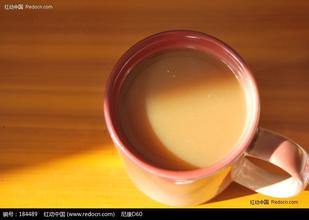Introduction to the characteristics of the moderate mellow thickness of Tanzania Kilimanjaro coffee flavor manor
Tanzania is an East African country south of the equator, bordered by Uganda and Kenya to the north and the Republic of the Congo, Rwanda and Burundi to the west. It is hot and humid all the year round, with an average temperature of 21-25 ℃ in most areas. Precipitation is divided into long and short rainy seasons, and the annual precipitation is abundant. The economy is dominated by agriculture, and coffee is one of the main cash crops in Tanzania. Arabica coffee and Robusta coffee are grown in Tanzania.
Mount Mount Kilimanjaro, located in northeastern Tanzania, is the highest mountain in Africa at 5895 meters above sea level. The ultra-high altitude makes the top of the mountain snow all the year round, while Tanzania's main coffee producing area is located at the foot of Mount Kilimanjaro. The area is rich in volcanic soil, which brings an adequate supply of nutrients for the growth of coffee trees. Coffee trees are generally planted at high elevations above 1150 meters, which is one of the prerequisites for Arabica to develop a high-quality flavor.
Tanzanian coffee is mostly washed. After picking, coffee farmers will send the coffee fruit to the nearest processing plant for processing. The treatment step of the water washing method is to screen and remove the impurities in the coffee fruit, then remove the coffee pulp and exocarp, and send it into the fermentation tank to remove the pectin layer on the inner pericarp by fermentation. clean and then dry. Coffee in Tanzania is graded in the same way as in Kenya, both according to the size of coffee beans. When screening raw coffee beans through a sieve with fixed size holes, the larger the number of the sieve is, the larger the particles of raw coffee beans are. The flat beans classified by size are mainly AA+, AA, AB. In addition, PB (peaBerry), which is more produced in Kenya and Tanzania, also has a set of sieve size standards dedicated to grading the size of round beans.
Tanzania is also often compared with its nearest neighbor Kenya. It is said that the earliest Arabica coffee in Tanzania was introduced by Christians from Kenya and is similar to Kenya in flavor characteristics. With grapefruit aromas and soft and bright acidity. However, because the economic conditions of Tanzania are worse than those of Kenya, the production conditions are poor. Tanzania's quality control is not strict enough, destroying the quality of coffee in many processing links, which can not compete with Kenya, which is famous for its high quality. Although it is similar to the Kenyan flavor, Tanzania as a whole is smoother and softer and belongs to the balanced type. With moderately low acidity and sweetness, dark chocolate finish, moderate mellow thickness. Compared with Kenya, which has a prominent personality, Tanzania is less hierarchical and does not give a very prominent feature after drinking, which makes people less impressive. But on the contrary, its soft and round characteristics are also more agreeable, which is easy to be accepted by people who are new to coffee.

Important Notice :
前街咖啡 FrontStreet Coffee has moved to new addredd:
FrontStreet Coffee Address: 315,Donghua East Road,GuangZhou
Tel:020 38364473
- Prev

Unique sour Guatemalan coffee flavor taste manor production area characteristics of boutique coffee beans
From 1871 to 1944, the country began to devote itself to economic modernization. At the same time, the United Fruit Company, which is dominated by the United States, has also begun to buy large coffee and banana estates in Guatemala and intervene in Guatemalan politics. After the revolution in October 1944, the former dictator was overthrown, democracy and freedom of expression were implemented in Guatemala, and the first law in Guatemalan history to protect the interests of workers came into force.
- Next

Introduction to the characteristics of Bali Coffee Flavor Manor in Indonesia, which is bitter, sweet and fragrant but not sour
The Republic of Indonesia is divided into the Greater Jakarta Capital Zone, the Yogyakarta Special Zone, the Aceh Special Zone, and 30 provinces, with a total of 33 first-level districts. The second-level administrative region has 396 counties and 93 cities (2014 statistics). Other major economic cities include Surabaya and Wan
Related
- Detailed explanation of Jadeite planting Land in Panamanian Jadeite Manor introduction to the grading system of Jadeite competitive bidding, Red bid, Green bid and Rose Summer
- Story of Coffee planting in Brenka region of Costa Rica Stonehenge Manor anaerobic heavy honey treatment of flavor mouth
- What's on the barrel of Blue Mountain Coffee beans?
- Can American coffee also pull flowers? How to use hot American style to pull out a good-looking pattern?
- Can you make a cold extract with coffee beans? What is the right proportion for cold-extracted coffee formula?
- Indonesian PWN Gold Mandrine Coffee Origin Features Flavor How to Chong? Mandolin coffee is American.
- A brief introduction to the flavor characteristics of Brazilian yellow bourbon coffee beans
- What is the effect of different water quality on the flavor of cold-extracted coffee? What kind of water is best for brewing coffee?
- Why do you think of Rose Summer whenever you mention Panamanian coffee?
- Introduction to the characteristics of authentic blue mountain coffee bean producing areas? What is the CIB Coffee Authority in Jamaica?

